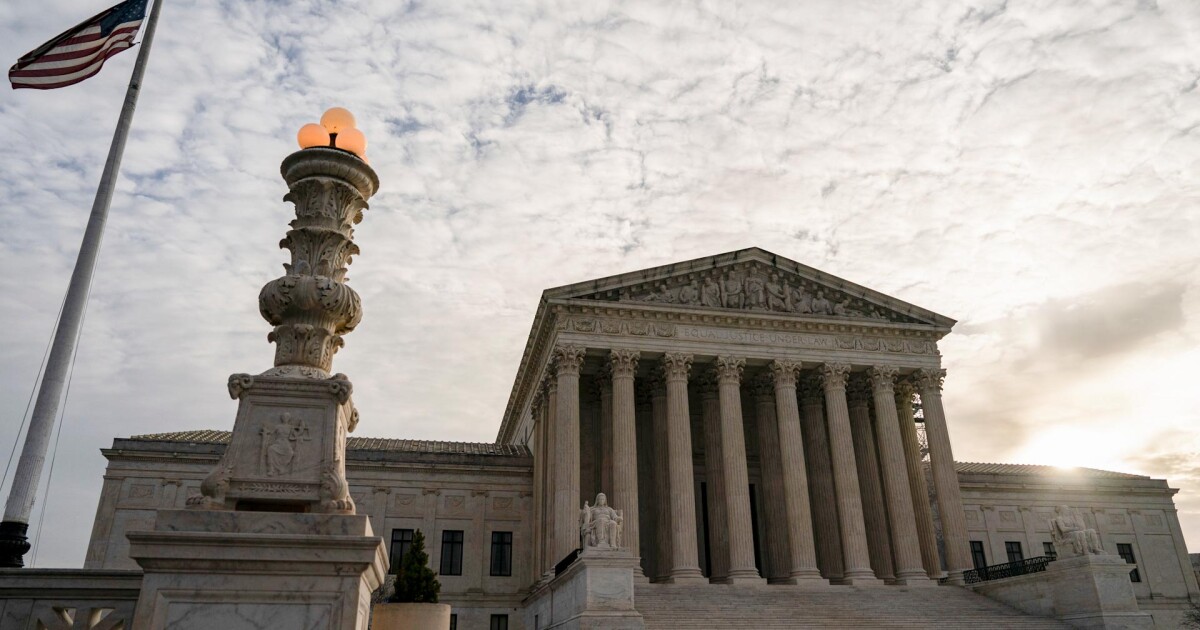Supreme Court may ease environmental impact reviews under NEPA
5 min read

Bloomberg News
U.S. Supreme Court justices last week appeared open to narrowing the scope of federal environmental impact reviews during oral arguments on a
A ruling favorable to the planned railroad would carry implications for a wide range of infrastructure projects that are subject to the National Environmental Policy Act.
That’s particularly true for infrastructure projects in the 11 western states, where nearly 50% of the land is owned by the federal government and another 15% is owned by native tribes, which will always trigger a NEPA review, said environmental and natural resources attorney Christopher Thomas, partner at Perkins Coie who specializes in infrastructure permitting.
“Everybody in the infrastructure business is watching this very closely,” said Thomas, who supports the Utah railroad and expects a favorable SCOTUS ruling.
“Hopefully for investors in bonds, there will be reduced uncertainty about project timelines going forward after this court [ruling] comes out because you won’t have quite as much agency delay in producing the documentation and less court second guessing after that,” he said.
The railway would extend from two terminus points in the Uinta Basin to connect with an existing Union Pacific line, providing a
The owners
The Surface Transportation Board in 2021 granted approval after completing an Environmental Impact Study required by NEPA. Opponents, including Eagle County, Colorado, the Center for Biological Diversity and others, sued to halt the railroad, saying the project carries significant direct and indirect environmental harms.
In August 2023, the U.S. Court of Appeals for the District of Columbia Circuit
Seven Counties petitioned the top court to take the case, and in June SCOTUS agreed to hear it.
NEPA is “the most litigated environmental statute out there,” said Chad Whiteman, vice president of environment and regulatory affairs for the Global Energy Institute, U.S. Chamber of Commerce during a
Securing a permit for road or bridge project takes an average of seven years, Whiteman said, and can take decades for transmission lines or mining projects.
“The average EIS is 1,700 pages long,” he said. “There’s a lot of stuff we want to build and a lot of funding [but] NEPA has evolved into something that’s a really difficult and complicated process and not predictable at all.”

Perkins Coie
He urged the court to set limits on what federal agencies need to consider when approving a project.
NEPA has become a “juicy litigation target” for opponents of infrastructure projects, Clement said. “They have to lard up these environmental impact statements to become thousands of pages because they know the challenge is coming,” he said.
Clement suggested federal agencies should only have to consider environmental impacts under NEPA that are limited in time and distance and not under the purview of another federal agency. He pointed to legislation passed by Congress last year called the
“I mean, that’s going to be impossible unless there is a reaffirmation that you don’t have to look at things that are not within the immediate ambit of the project and are in another agency’s lane,” he said. “People who are actually trying to invest in these infrastructure projects need a little more clarity on that and a little more assurance that they’re not going to get hung up for years and years based on litigation in the D.C. Circuit and the Ninth Circuit.”
The Biden administration, represented by Deputy Solicitor General Edwin Kneedler, also urged the court to overturn the D.C. Circuit decision but defended the existing NEPA standard.
“The page limit, I think, should be a statutory affirmation that the agency shouldn’t have to go to the ends of the earth to focus or to decide the environmental issue,” Kneedler said.
William Jay, the attorney representing the project’s opponents, argued that the negative environmental impacts from the railroad are direct and obvious.
“The impacts at issue here are reasonably foreseeable consequences of this $2.7 billion railway project whose entire rationale is to transport crude oil,” Jay said. “‘Reasonable foreseeability’ is the test that Congress — that has been in NEPA since the beginning and that Congress has recently reaffirmed in the Builder Act.”
Justices appeared open to the argument that court actions have led to reviews that go beyond what Congress intended in NEPA.
“[I]t seems to me, the problem that has crept in is conflating what the agency can do and should do from what the role the courts is here, and by the courts taking an overly aggressive role, it’s in turn created an incentive for the agencies to do 3,000 page EIS,” said Justice Brett M. Kavanaugh.
Construction may not begin even if the Supreme Court rules in favor of Uinta because the court took up only one of the reasons the lower court halted the railway, said Wendy Park, senior attorney at the Center for Biological Diversity.
“There were several defects found in the environmental review and approval process besides the NEPA issues that were before the court,” Park said. Those include the failure to consider the impact on Colorado River fish under the Endangered Species Act and the project’s financial feasibility, she said. “So the agency will need to deal with that before it considers reapproval,” she said.
A ruling in favor of the Uinta would bring uncertainty rather than clarity for infrastructure projects going forward, Park warned.
“If the court does go in the direction that the petitioners and the government are asking it to, I think it would be a rewriting of the statute and possibly could create more uncertainty for infrastructure projects because it would require new rules to be applied to these projects and potentially create more litigation about the meaning of the rules,” Park said. “So I wonder if the petitioner’s objective would actually be achieved here by having the law changed.”






